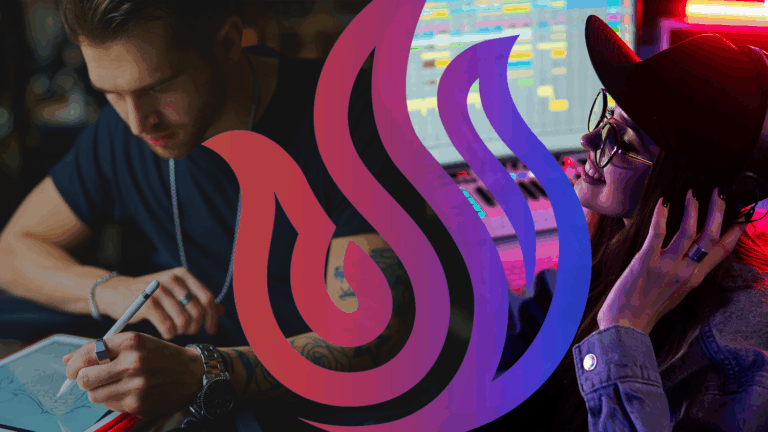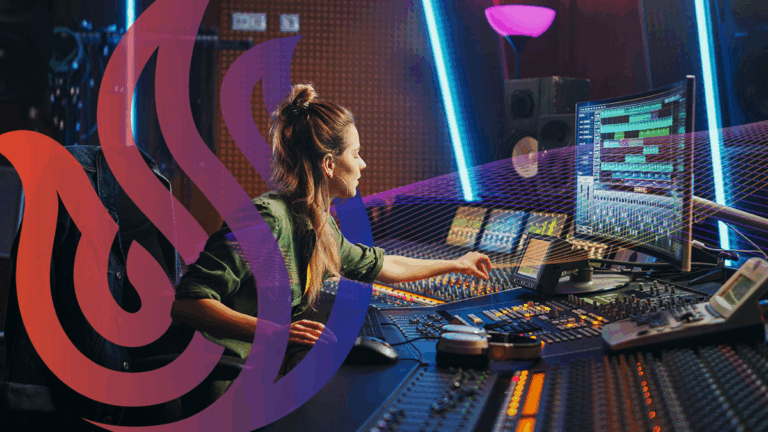Animated films are both an imaginative wonder and a technical achievement. It is equal parts creativity and science combined into one cohesive package. You may be wondering how some of your favorite animated shows and movies are produced. The most ambitious among you even dream of making such animated works yourself. A professional career in animation requires a lot of hard work and determination. However, the goal is far more achievable than you may think. As you learn more about the medium, and the process by which animators bring their ideas to life, you will see that making your own 3D worlds is within your grasp.
What is an Animated Film?
Animated films differ from traditional film by how they are produced. Traditional film uses live-action footage captured in the real world. Cameras point at actual people, places, and items. Physical movie sets are created to serve as background imagery and unique iconography. The footage is then carefully edited to tell a story or produce an emotional response in the audience. Classic movies such as Terminator and Back to the Future utilize this traditional style of filmmaking.
Animated films can be either hand drawn in 2D, or computer generated in 3D. Each animation style varies to some degree, but the core principles have a great deal of overlap. Cartoonists and analog artists may prefer the classic 2D approach. Digital artists who love to push technology to its limit often prefer working in 3D. 2D animation includes iconic films such as Disney’s Aladdin and Treasure Planet. Examples of 3D animated films include Toy Story and Minions to name a few.
3D animated films differ from live action productions because an entire digital world must be staged in a program such as a video game engine. Instead of placing physical cameras on a set, an animator places digital cameras inside the program. This gives the artist additional leeway when lining up the perfect angle in various shots. Animation also allows for magical effects that would be impossible to fake in a live action environment.
How is an Animated Film Produced?
While every animation studio has their own unique process, there is a basic seven step formula you will find repeated throughout the industry. The following explanation of each step will give you a better idea of how your favorite animated films come to life.
- Idea Generation
All great animations start with an idea. The initial idea must then be built into an entire story. This step includes creating the story and planning who will work on the project. This includes hiring animators, writers, and voice actors. After creating an outline and having a plan in place, the animated film can move on to the next step.
- Design Bible
Since animation is a visual medium, the look of your animated film is vitally important. The design bible informs the entire staff what the project should look like. This includes reference images, sample assets, inspiration notes, and anything else needed to keep everyone on the same page throughout development. Whenever something is added to the project, it must blend in with the style and tone of the original design bible.
- Storyboarding
A storyboard is a simple representation of your animated film presented in a comic book style. The storyboard does not have to be perfect, as it is for internal use only. Each panel must simply convey what will happen in each scene. Again, this keeps everyone on the same page, so they know what target the studio has in mind. Text can be a major component of storyboards, to emphasize key details animators should prioritize during production.
- Animatics
Think of animatics as the rough draft of your animated film. The key frames are created, and basic motion is applied to major scenes. This serves as a transition phase between the static story board and the lively digital world realized in the next step. Animatics can also be shown to clients and investors to receive additional funding or satisfy development milestones.
- Production
The production phase is when the proper animation comes together. The key frames are polished, and all the details in between are completed. The more detail between each key frame, the smoother each motion will be. The goal of production is to make every motion in your animated film as appealing as possible. Using the twelve principles of animation, each scene is lovingly created by a team of hardworking animators.
- Editing and Feedback
Since animation projects often require lots of funding from investors, a nearly finished version of the film will be sent for review. The money people can request changes and the team must then choose how much they are willing to bend. While it is always ideal to uphold the creative vision, investors often get the final say on most aspects of production. Another review occurs after making the changes and the cycle continues until the investors are ready to release.
- Rendering the Final Product
With all the changes finalized, the complete version of the film can be rendered. Rendering is the process of completing each digital scene and compiling them into one giant file for distribution. The animation becomes a tangible product for theaters and streaming sites.
Who Works On an Animated Film?
Modern 3D animations require large teams of people. There are many roles available for aspiring artists who desire to work in movies. Here is a rundown of the key positions to consider.
Animators
Animators bring each scene to life by applying motion to the characters, objects, and other elements in a digital world. These artists rig characters and make sure every motion looks believable and is satisfying for audiences to observe.
Modelers
Modelers create objects, materials, shaders, textures, and lighting effects. Each of these assets are carefully crafted and placed into a scene, as necessary.
Writers
Writers help guide the plot forward and write dialogue between characters. Since animated films are vehicles for storytelling, quality writers are more important than you may think.
Musicians
Another critical component of any animation is the sound. Just try muting the TV while watching something to see how important this aspect of production is. Musicians add emotional impact to each scene. Sound effects can further enhance the audience’s reaction to events happening on screen.
Voice Actors
Selling the emotional journey of your characters requires the use of professional voice acting. A trained voice actor adds depth and nuance to each scene through vocal communication. When paired with excellent writing, a solid voice cast amplifies the power of your tale.
Producers/Leads
With so many teams working in tandem, there needs to be a few people keeping everything organized. Producers and team leads ensure everyone is on the right track and deadlines are met. Scheduling, budgeting, and other plans are handled so that everyone (like animators) can do what they do best without worrying about administrative duties.
How Do You Become a 3D Animator?
If you would like to become a 3D animator, a great way to do so is by attending a creative arts college. A formal degree program in 3D animation will walk you through the steps listed above. You will gain experience using industry standard hardware and software. You will learn from instructors with experience publishing their own animated films. You will even meet fellow digital artists who can help you work on your own indie projects if you prefer, instead of joining an established studio.
Upon graduating, you will have the skills and knowledge necessary to start your own studio or apply for an entry-level position at an established animation house. Keep in mind that you always have the flexibility to switch between indie and mainstream work at any time.
What Do You Learn During a 3D Animation Program?
3D animation programs start by teaching you the fundamentals of traditional art. This foundational knowledge enhances your digital designs. Knowing what the human eye finds appealing is priceless. From there, you are ready to move into digital production.
Next, you will learn the various animation principles and how to apply them to any object or character. Character assets can be rigged with simulated bones and muscles to achieve realistic results. You will also learn techniques for more alien objects and designs. After practicing with industry standard hardware and software, you will learn how to storyboard your own projects. Storyboarding and communicating your ideas is crucial to getting your point across to the rest of the team. Your ideas may be great, but you must convince others of that fact as well.
The bulk of your classes involve working on your own short films in groups with fellow students. This firsthand experience imparts each step of the production process in a memorable way. You will build confidence in your skills and develop an intimate understanding of the steps needed to publish a completed work.
The Benefits of a Formal Education vs Self-Study
Although the thought of self-study using YouTube videos may be tempting, there are huge issues with this approach. The quality of each lesson varies wildly on YouTube, and there is no organized structure to follow. The info you receive may be outdated, completely incorrect, or there may be gaps in the training that leave out critical details.
Complete and Succinct Curriculum
On the other hand, a formal education is carefully orchestrated by a panel of professionals who know what is expected of budding animators. The classes are lined up in a way to provide optimal training at an efficient rate. You can be sure that all knowledge gaps are filled and the information you receive is relevant to the current industry. Considering how fast the world of entertainment moves, you want to enter it with the proper footing.
Network with Classmates and Instructors
Attending a creative arts college also allows you to build a network of connections within entertainment. Many of your classmates will have a successful career someday. Having their contact information and being on friendly terms will greatly increase the number of job leads you have later in life. Your instructors can also serve as mentors and potential contacts down the road.
Career Services
Finally, you can take advantage of career services upon graduation. A career services staff member will help you acquire your first industry position by matching you with studios looking for entry level applicants. Boost your own reputation with the help of your school to get your foot in the door. From there, your impeccable training will carry you to a level of success within the 3D animation industry.
Want to Learn More?
If your passion is for visual effects, 2D or 3D animation, or concept art for video games or blockbuster films, this is the Digital Arts & Animation degree program for you. Gain the digital arts and animation skills you need to kick off your career in this dynamic and growing industry.
University of Silicon Valley is uniquely poised to offer a meaningful and valuable education for 21st century students. We believe in an education that directly correlates with the work you’ll be doing after you graduate. Interested in learning more? Contact Us today.


